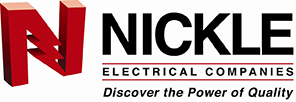
Working in a proactive manner is one of the most important and efficient ways to complete a new job. Creating a pre-formulated strategy enables all team members to stay a step ahead, foresee potential complications and handle them without a hitch, stay on schedule, analyze costs, and clearly visualize the project from start to finish.
Pre-planning will outline how the job will get done and how quickly. About half of the hours it takes to complete a job are dedicated to actual installation. The remainder is spent in planning, designing, moving material, reviewing documents, cleaning up, etc. Some of these tasks can be moved to the pre-planning process, increasing time for the actual install.
Typical areas of the job that are pre-planned include equipment selection, potential weather setbacks, identifying permit requirements, scheduling, material handling/staging, pre-fabrication, labor tracking, safety, best practices, and quality.
Pre-planning takes out unknowns and risks to the owner. When all aspects of the project are anticipated ahead of time, the chance of errors decreases. This can boost the owner’s confidence in the project and give him/her a basis to make informed decisions.
It’s important that a pre-plan is communicated to all parties early on, and communicated properly. This will streamline processes and help the project move along efficiently. Enhancing productivity is key to pre-planning. It will help avoid surprises that lead to costly solutions and construction delays.
Pre-planning can also improve the project schedule. With enough lead time, materials can be purchased and every party involved – vendors, designers, subcontractors – have more time to prepare factors like labor and equipment.
Everybody should plan for success. No quality jobs have been completed without a sound, comprehensive strategy.





